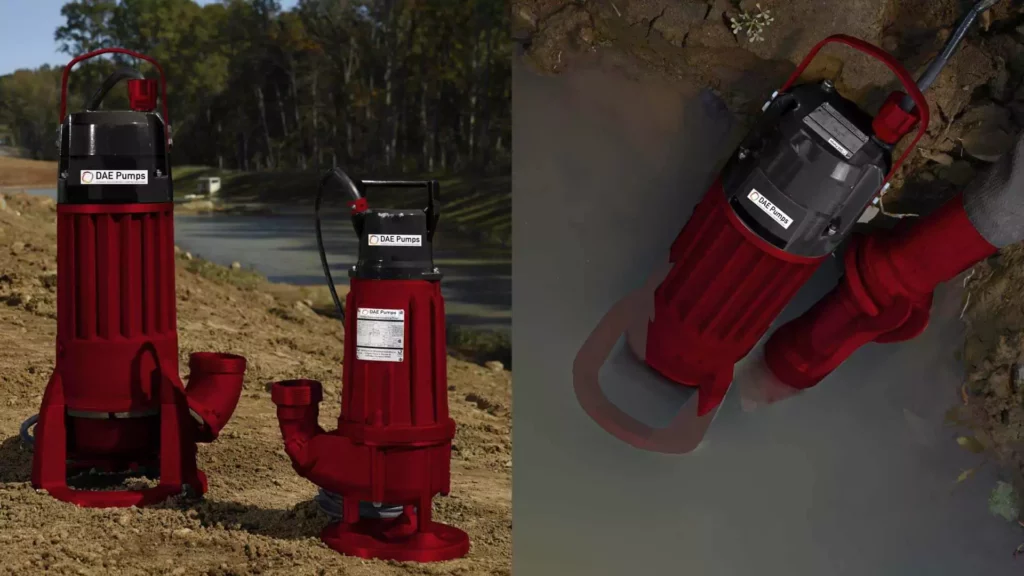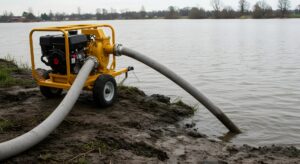Submersible slurry pumps are essential for handling abrasive and viscous materials in industries like mining, dredging, and construction. However, these pumps are prone to various issues that can compromise efficiency and cause downtime. Addressing submersible slurry pump problems promptly is crucial for maintaining operational performance and extending the pump’s lifespan.
Operators frequently encounter challenges such as pump clogging issues, motor failures, and slurry pump seal leaks. These submersible slurry pump problems can significantly impact project timelines and maintenance costs. This guide explores the most common problems and provides practical troubleshooting solutions to keep your submersible slurry pump running efficiently.
Understanding the Common Problems with Submersible Slurry Pumps
Submersible slurry pumps operate in harsh environments and handle materials that can cause wear and tear. Understanding the common issues is the first step in maintaining optimal performance.
- Pump Clogging Issues: These arise when solids or debris obstruct the flow, leading to reduced efficiency or complete pump failure.
- Motor Failure Troubleshooting: Problems with the pump motor, such as overheating or electrical faults, can disrupt operations and require immediate attention.
- Slurry Pump Seal Leaks: Leaking seals can cause contamination, reduced performance, and potential motor damage.
Recognizing these submersible slurry pump problems early allows operators to take proactive measures, minimizing the impact on productivity and costs. By understanding these recurring submersible slurry pump problems, you can prepare better solutions for efficient operations.
Causes and Solutions for Pump Clogging Issues
Pump clogging issues are among the most frequent submersible slurry pump problems. These occur when debris or large particles block the flow path, straining the pump and reducing its efficiency.
Common Causes:
- High solid content in the slurry.
- Oversized particles or foreign objects entering the pump.
- Lack of proper filtration or screening mechanisms.
Troubleshooting and Solutions:
- Pre-Filtration: Install screens or filters to reduce the size of particles entering the pump.
- Regular Cleaning: Schedule routine cleaning to remove accumulated debris and prevent blockages.
- Durable Pump Design: Use pumps specifically designed to handle high solid content and abrasive materials.
By addressing pump clogging issues through these measures, operators can ensure smoother operations and reduce the risk of costly repairs. Avoiding pump clogging issues is key to overcoming submersible slurry pump problems effectively.
Motor Failure Troubleshooting: Identifying and Resolving Issues
Motor-related submersible slurry pump problems can disrupt entire operations. Issues such as overheating or electrical faults are common and often stem from improper usage or lack of maintenance.
Causes of Motor Failure:
- Continuous heavy-duty operation without adequate cooling.
- Electrical problems like power surges or short circuits.
- Wear and tear on motor components due to harsh conditions.
Steps for Motor Failure Troubleshooting:
- Check Power Supply: Ensure the pump is receiving the correct voltage and current. Faulty electrical connections should be repaired immediately.
- Cooling Mechanisms: Verify that the pump’s cooling system is functioning properly. Install external cooling if necessary for high-temperature operations.
- Inspect Components: Regularly inspect the motor’s windings, bearings, and other critical parts for signs of wear or damage.
Implementing these motor failure troubleshooting steps helps resolve issues promptly, reducing downtime and prolonging the life of the motor. Efficient motor failure troubleshooting not only addresses immediate submersible slurry pump problems but also prevents long-term disruptions.
Preventing and Addressing Slurry Pump Seal Leaks
Slurry pump seal leaks can cause significant problems, ranging from reduced pump efficiency to severe motor damage. Seals are critical components that prevent slurry from infiltrating the motor or escaping the system.
Causes of Slurry Pump Seal Leaks:
- Worn-out seals due to abrasion from slurry particles.
- Misalignment of the pump shaft, leading to uneven pressure on the seals.
- High-pressure slurry infiltration beyond the seal’s capacity.
Consequences:
- Loss of efficiency and increased energy consumption.
- Contamination of the motor, potentially causing electrical failure.
- Environmental hazards if the slurry leaks into surrounding areas.
Solutions:
- Regular Inspections: Inspect seals frequently to identify early signs of wear or damage.
- Timely Replacements: Replace seals as part of routine maintenance to avoid unexpected failures.
- Proper Alignment: Ensure the pump is installed correctly and aligned to prevent undue stress on the seals.
Addressing slurry pump seal leaks promptly ensures consistent performance and protects the pump from further damage. Effective solutions to slurry pump seal leaks contribute to minimizing submersible slurry pump problems.

General Troubleshooting Tips for Submersible Slurry Pump Problems
In addition to specific solutions for pump clogging issues, motor failures, and slurry pump seal leaks, operators can implement general practices to minimize submersible slurry pump problems.
Key Troubleshooting Tips:
- Regular Maintenance: Establish a maintenance schedule to inspect, clean, and service the pump. This reduces the likelihood of unexpected issues.
- Monitor Performance Metrics: Track flow rates, pressure levels, and energy consumption to identify anomalies early.
- Consult Manuals and Experts: Follow the manufacturer’s guidelines for operation and maintenance. Seek professional help for complex or recurring problems.
- Staff Training: Train operators to handle the pump correctly and perform basic troubleshooting, ensuring quick response to minor issues.
By adopting these practices, you can address submersible slurry pump problems effectively and maintain reliable performance.
Conclusion
Submersible slurry pumps are indispensable tools in many industries, but they require proper care to function optimally. Common submersible slurry pump problems, such as pump clogging issues, motor failures, and slurry pump seal leaks, can significantly affect performance if left unaddressed.
Understanding the causes and solutions for these issues, combined with proactive troubleshooting and regular maintenance, ensures the pump’s longevity and efficiency. By implementing the strategies outlined in this guide, operators can minimize downtime, reduce repair costs, and maintain smooth operations.
Take control of your pump’s performance today by addressing potential problems head-on and consulting with experts when necessary. With the right approach, submersible slurry pump problems can become manageable challenges rather than costly setbacks.





